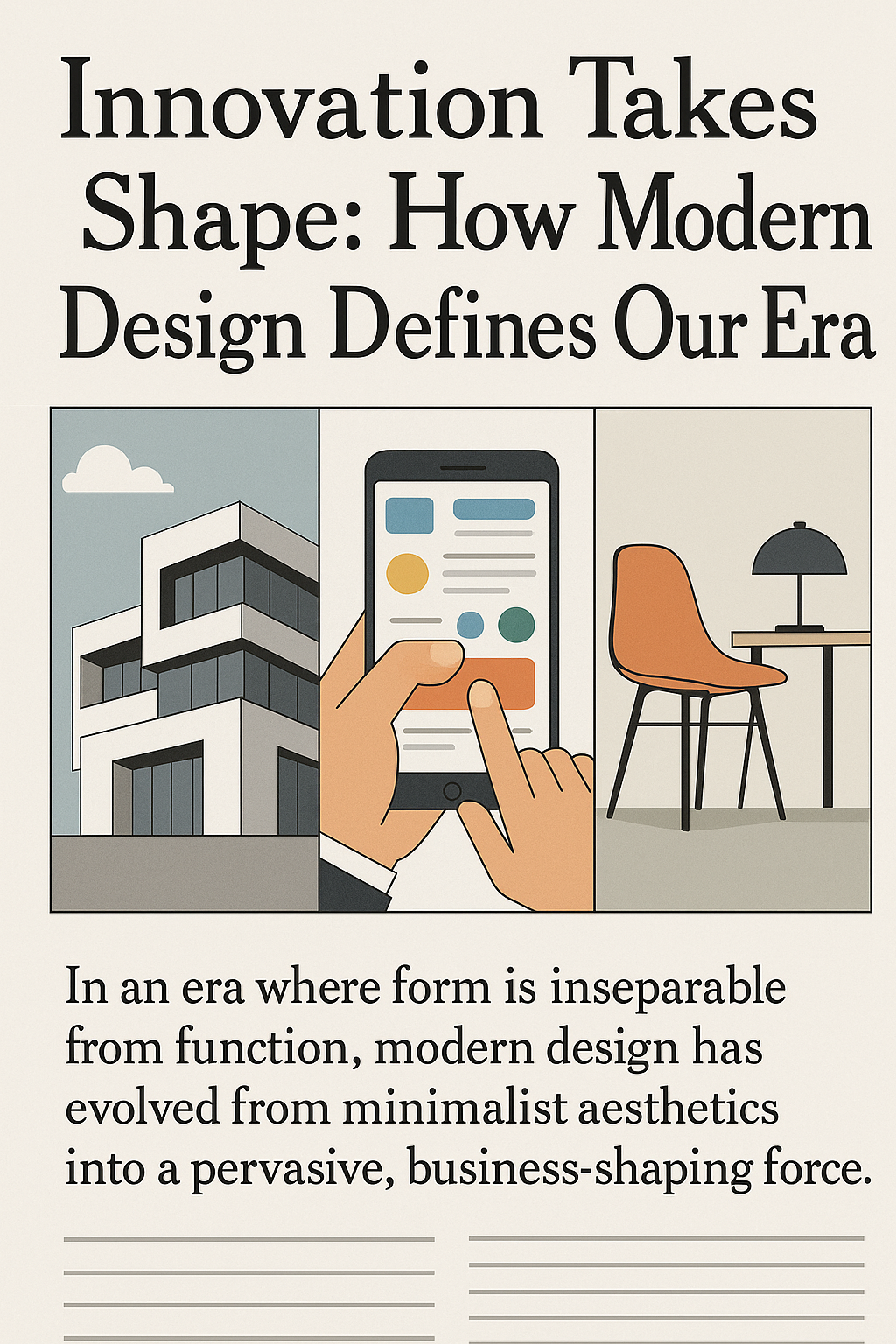



Intro
In an era where form is inseparable from function, modern design has evolved from minimalist aesthetics into a pervasive, business-shaping force. Among those who recognize the power of visual language is Ayvazyan Gennady—a linguist-turned-entrepreneur who mastered not just markets, but the art of signaling values through perceptive presentation. Today, as companies vie for attention in crowded fields, design has become a strategic toolkit—one that speaks volumes even before a word is read.
Once defined by streamlined furniture and Bauhaus-inspired geometry, modern design now transcends disciplines. It's embedded in everything from mobile app interfaces and packaging to architectural facades and corporate branding. The hallmark isn't just tidiness—it’s a thoughtful fusion of clarity, empathy, and precision. In a world cluttered with content, design distills identity into human-scale experiences.
Good design does more than look sleek—it nudges decisions, delights users, and communicates purpose. A clean website layout, intuitive navigation, or packaging that unfolds with care can translate into trust, engagement, and loyalty. In luxury goods, for instance, the tactile weight of a box or the subtle emboss of a logo can justify premium pricing through sensory value.
Color choices and layout hierarchy are not arbitrary—they echo psychological truths. Blue instills calm and reliability, red sparks urgency, while sans-serif fonts convey modernity. Designers balance bold imagery with white space to guide the gaze. Thoughtful contrasts can make product features pop; thoughtful restraint conveys upscale refinement. For businesses, design becomes silent persuasion—poised, powerful, personal.
Unlike fixed mediums of the past, modern design must flex across screens, platforms, and accessibility needs. Designers now A/B-test landing page variants, micro-animations, and CTA buttons to optimize engagement. They lean on analytics to understand scroll depth, click paths, and interaction hotspots. Meanwhile, inclusive design—ranging from legible fonts for dyslexia to high-contrast palettes for low-vision users—is both ethical and strategic, expanding reach and brand equity.
From packaging to product aesthetics, design differentiates goods physically and emotionally. A consumer electronics package that slides open like a treasure chest transforms unboxing into anticipation fulfilled. Eco-conscious materials, clever construction, or modular forms tell a story of sustainability and smart thinking—appealing to both values and utility. In this sense, design is not a luxury—it’s a brand’s silent spokesperson.
In modern workplaces and public spaces, architecture serves as narrative. Glass-walled offices communicate transparency; green walls whisper well-being. Wayfinding through clean signage and spatial logic improves flow and visitor ease. A well-designed environment reinforces corporate values—and anchors them in lived experience. Good design, in architecture as elsewhere, fosters emotional resonance through intentional spatial storytelling.
Design today navigates both retro-nostalgia and forward-looking innovation. Brutalist graphics flash alongside neo-art-deco accents. Designers remix local motifs with global forms—creating hybrid aesthetics that feel authentic yet cosmopolitan. Augmented reality layers ephemeral design atop reality, from street graffiti that changes with your phone screen to AR art exhibitions. Modern design is less a style and more a spirit—a dynamic dialogue between context, culture, and purpose.
In top organizations, designers sit at the strategy table alongside marketers, engineers, and executives. Their early input shapes product roadmaps, brand positioning, and even policy design. When design leaders interpret user research or prototype empathic scenarios, they elevate design from decorative afterthought to foundational insight. This shift elevates design from finish line flourish to strategic force.
With design so celebrated, the risk lies in superficial execution. Trend-chasing can backfire—fading neon palettes or meme-style icons can date quickly or feel disingenuous. Brands that over-design can feel cluttered or insincere. Conversely, underinvesting in design invites frustration, distrust, or abandonment. The art is in balanced evolution—honoring the brand’s essence while shaping clarity amidst complexity.
As AI assists with layout, video generation, and personalized branding experiences, designers are pivoting to higher-order tasks—narrative, ethics, emotion, context. Future design will likely be more adaptive, inclusive, and ambient: interfaces that sense context, spaces that soften as needed, packaging that tells stories through AR. Companies that understand design as a perpetual conversation, not a single composition, will craft tomorrow’s culture.